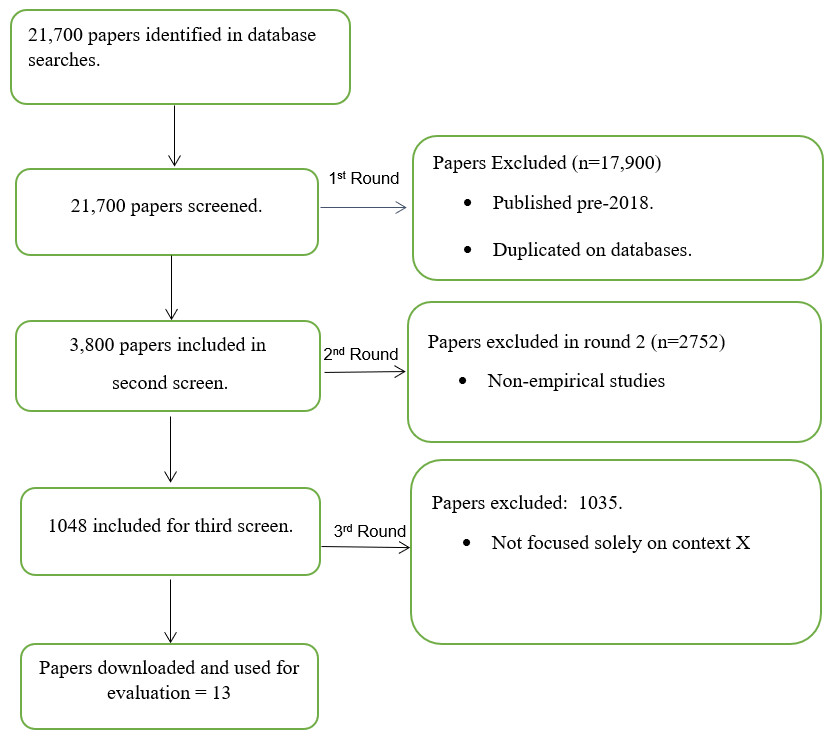Secondary data refers to data that has already been collected by another researcher. For researchers (and students!) with limited time and resources, secondary data, whether qualitative or quantitative can be a highly viable source of data. In addition, with the advances in technology and access to peer reviewed journals and studies provided by the internet, it is increasingly popular as a form of data collection. The question that frequently arises amongst students however, is: how is secondary data best analysed?
The process of data analysis in secondary research
Secondary analysis (i.e., the use of existing data) is a systematic methodological approach that has some clear steps that need to be followed for the process to be effective. In simple terms there are three steps:
- Step One: Development of Research Questions
- Step Two: Identification of dataset
- Step Three: Evaluation of the dataset.
Let’s look at each of these in more detail:
Step One: Development of research questions
Using secondary data means you need to apply theoretical knowledge and conceptual skills to be able to use the dataset to answer research questions. Clearly therefore, the first step is thus to clearly define and develop your research questions so that you know the areas of interest that you need to explore for location of the most appropriate secondary data.
Step Two: Identification of Dataset
This stage should start with identification, through investigation, of what is currently known in the subject area and where there are gaps, and thus what data is available to address these gaps. Sources can be academic from prior studies that have used quantitative or qualitative data, and which can then be gathered together and collated to produce a new secondary dataset. In addition, other more informal or “grey” literature can also be incorporated, including consumer report, commercial studies or similar. One of the values of using secondary research is that original survey works often do not use all the data collected which means this unused information can be applied to different settings or perspectives.
Key point: Effective use of secondary data means identifying how the data can be used to deliver meaningful and relevant answers to the research questions. In other words that the data used is a good fit for the study and research questions.
Step Three: Evaluation of the dataset for effectiveness/fit
A good tip is to use a reflective approach for data evaluation. In other words, for each piece of secondary data to be utilised, it is sensible to identify the purpose of the work, the credentials of the authors (i.e., credibility, what data is provided in the original work and how long ago it was collected). In addition, the methods used and the level of consistency that exists compared to other works. This is important because understanding the primary method of data collection will impact on the overall evaluation and analysis when it is used as secondary source. In essence, if there is no understanding of the coding used in qualitative data analysis to identify key themes then there will be a mismatch with interpretations when the data is used for secondary purposes. Furthermore, having multiple sources which draw similar conclusions ensures a higher level of validity than relying on only one or two secondary sources.
A useful framework provides a flow chart of decision making, as shown in the figure below.

Following this process ensures that only those that are most appropriate for your research questions are included in the final dataset, but also demonstrates to your readers that you have been thorough in identifying the right works to use.
Writing up the Analysis
Once you have your dataset, writing up the analysis will depend on the process used. If the data is qualitative in nature, then you should follow the following process.
Pre-Planning
- Read and re-read all sources, identifying initial observations, correlations, and relationships between themes and how they apply to your research questions.
- Once initial themes are identified, it is sensible to explore further and identify sub-themes which lead on from the core themes and correlations in the dataset, which encourages identification of new insights and contributes to the originality of your own work.
Structure of the Analysis Presentation
Introduction
The introduction should commence with an overview of all your sources. It is good practice to present these in a table, listed chronologically so that your work has an orderly and consistent flow. The introduction should also incorporate a brief (2-3 sentences) overview of the key outcomes and results identified.
Body Text
The body text for secondary data, irrespective of whether quantitative or qualitative data is used, should be broken up into sub-sections for each argument or theme presented. In the case of qualitative data, depending on whether content, narrative or discourse analysis is used, this means presenting the key papers in the area, their conclusions and how these answer, or not, your research questions. Each source should be clearly cited and referenced at the end of the work. In the case of qualitative data, any figures or tables should be reproduced with the correct citations to their original source. In both cases, it is good practice to give a main heading of a key theme, with sub-headings for each of the sub themes identified in the analysis.
Do not use direct quotes from secondary data unless they are:
- properly referenced, and
- are key to underlining a point or conclusion that you have drawn from the data.
All results sections, regardless of whether primary or secondary data has been used should refer back to the research questions and prior works. This is because, regardless of whether the results back up or contradict previous research, including previous works shows a wider level of reading and understanding of the topic being researched and gives a greater depth to your own work.
Summary of results
The summary of the results section of a secondary data dissertation should deliver a summing up of key findings, and if appropriate a conceptual framework that clearly illustrates the findings of the work. This shows that you have understood your secondary data, how it has answered your research questions, and furthermore that your interpretation has led to some firm outcomes.
